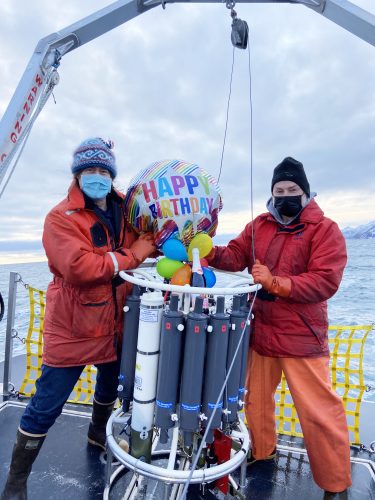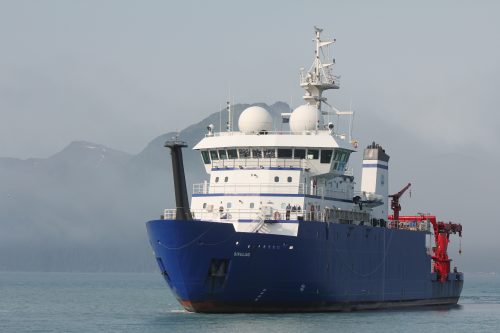UAF's Seward Marine Center celebrates 50 years
December 18, 2020
Alice Bailey
907-474-5350

The University of Alaska Fairbanks Seward Marine Center celebrated its 50th birthday this year, marking a half-century of becoming the premier research-oriented marine facility in Southcentral Alaska.
SMC, which is part of the College of Fisheries and Ocean Sciences, supports long-term monitoring and related marine and fisheries research in Alaska’s oceans. Scientists have relied heavily on SMC personnel, who operate research vessels, assist with scientific equipment, maintain ship and shore laboratories, and provide administrative support.
On Dec. 14, Seward Mayor Christy Terry presented a proclamation commemorating SMC’s 50th anniversary. The facility is one of the city’s largest year-round employers.
“SMC is such a benefit to Seward. I just can’t stress that enough,” she said.
SMC was originally known as the Seward Marine Station and was operated by the UA Institute of Marine Science. In 1970, IMS moved the marine station from Southeast Alaska to Seward. Because Seward is accessible via the railroad and highway system, it was easier to mobilize scientists, equipment and supplies to SMC. The Seward location is also closer to the Gulf of Alaska and the Bering Sea, where much research was being conducted.
A succession of ships has been based at SMC. Today, SMC is the homeport of two state-of-the-art research vessels: RV Nanuq is a 40-foot near-coastal vessel acquired by CFOS in 2019, and RV Sikuliaq is a 261-foot Global Class ice-capable vessel owned by the National Science Foundation and operated by CFOS. The Sikuliaq is the only ice-capable vessel in the U.S. Academic Research Fleet. It supports UAF scientists and students, as well as researchers from across the nation and around the world.
“For the last 50 years, we have provided consistent maritime access to the Gulf of Alaska and the Arctic,” said Doug Baird, SMC’s director.

The Seward Marine Center campus currently includes a marine education building, a warehouse and shop, administrative offices, a laboratory, and a small apartment building for visiting faculty and researchers. Plans are in the works for a longer pier to accommodate the Sikuliaq’s length, as well as for renovations to labs and the seawater system.
In large part because of the shoreside support provided by SMC, the Sikuliaq was the first ship in the ARF to embark on a research cruise in spring 2020 after the pandemic shut down operations.
“Sikuliaq supports the legacy of ocean observations based out of Seward that has garnered state, national and international recognition,” said CFOS Dean Bradley Moran. “The Seward Marine Center has been a central part of our mission as a leader in marine research, and we look forward to the next 50 years.”


